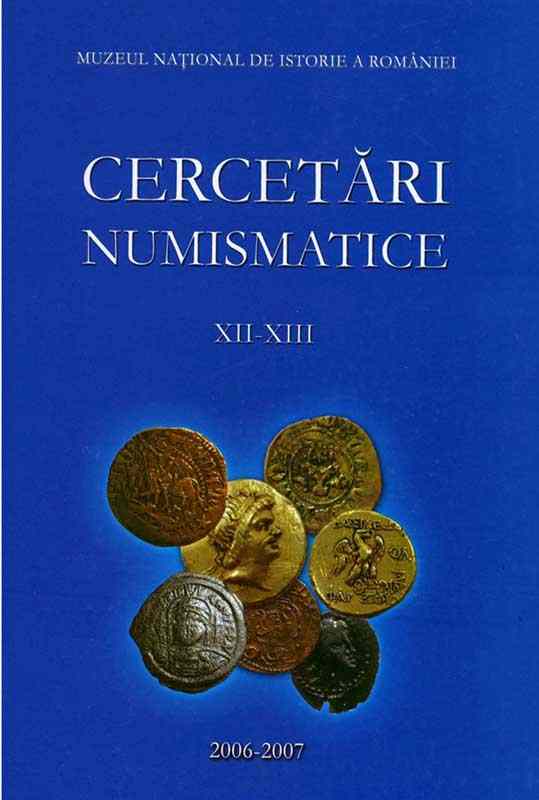
Talerul „leu” al lui Gheorghe Duca / Gheorghe Duca’s „Lion” Thaler
| Autori |
|
| Secţiunea |
|
| Limba de redactare | română |
| Descriptori |
|
| Excerpt | Since the last quarter of the 17th century, when the Ottoman Empire imposed its overwhelming authority, diminishing the fragile autonomy of the Moldavian state, the rulers of Moldavia ceased to issue coins for almost a century. Only at the end of the 16th century, when Poland tried to extend its influence over the Romanian principalities, Moldavia issued briefly coins, but in small quantities and with no effect in economic terms. These political] and economical interactions between the two powers of the Eastern Europe, the Ottoman Empire and Poland, in the second part of the 17th century, generated the reopening around 1662 of the Suceava mint, where most of the Moldavian coins were struck. Contemporary accounts tell us about large quantities of schillings struck in Moldavia, starting with the reign of Istrate Dabija (1662-1666), mainly counterfeits of Baltic and Polish schillings, but, also, in small numbers, issues bearing the name of the voivode. Romanian numismatists linked the rebirth of the monetary activity with the presence in Moldavia of Titus Livius Boratini, an Italian engraver who came from Poland towards the end of 1661. He struck large quantities of schillings of copper there, since 1659, in the mints of Ujazdow and Cracovia, making huge profits and, consequently, generating large resentments, which forced him, eventually, to go in exile. Arrived in Moldavia, he probably setup the mint in Suceava castle, and also prepared qualified engravers and workers who continued to strike coins after the Italian returned in Poland, in 1663. The reasons for minting such coins are probably more than the need for small currency, as suggested by internal contemporary accounts. Probably the whole effort was directed in getting big profits by exporting the counterfeits to Poland and exchanging them for good currency, thus generating troubles for the already weakened Polish economy. The Polish contemporary accounts all agree to treat this affair very seriously, showing that the counterfeits were very damaging to Poland. Thus, the lack of reaction from the Ottoman Empire reveals the involvement in the process, if not directly then indirect, by tolerating an activity of the Moldavian voivode that served their goals too. It is known from internal accounts that the monetary activity continued after the death of Istrate Dabija, during the reigns of Iliaş Alexandru and Gheorghe Duca. Moldavian engravers, probably trained by Boratini, are known from documents: accounts from 1670, during the reign of Gheorghe Duca even mentioned one royal mint master, Alexandru. This mint master was probably involved in an affair which is described in two French consular reports, which are reproduced in the paper. They told us about the involvement of the voivode in counterfeiting leeuvendaalders, activity that generated his fall, after a very strong reaction of the Ottomans, following the complaints of the local noblemen. The reason for which Gheorghe Duca started to counterfeit leeuwendaalders is probably the acute need for money of a voivode that was known for being a big spender. The lack of cash was acute in Moldavia of the 17th century, with a monetary economy severely affected by the widespread practice of usury and by the constant demand of cash by the Ottomans, both for the tribute and for all sorts of gifts to the Sultan and to high ranking officials, which became a constant practice in this period. The leeuwendaalder was used by the Dutch merchants for the commerce with the Eastern Europe, mainly with Poland in exchange for its grain. From Poland the leeuwendaalders entered in large numbers in Moldavia, mainly via the cattle commerce, since the reign of Vasile Lupu (1634-1653) and were used for the payments to the Ottomans. That's why they reacted so violently, as opposed to the apparent lack of reaction when the schillings were minted. This time the Ottoman economy, in which the arslan was of widespread use, was affected. Moreover, even in Moldavia the counterfeiting of the leeuwendaalders generated troubles, because in a system in which usury played a key role, both the creditors and the debtors were affected by the presence of bad coins in the monetary mass. It seems that the voivode was aware of the dangers involved, because he tried to keep all secret, even by keeping the incriminating dies himself. The main subject of this paper is a counterfeit leeuwendaalder, struck in bronze, probably found in Suceava or in its neighbourhood. The coin, having 43.5 mm in diameter and 29.06 grams in weight is compared with some imitative and counterfeit leeuwendaalders. The conclusion is that this it is likely to be one of the coins struck in Suceava castle during the second reign of Gheorghe Duca. This attribution is based on the following arguments: the possible place where it was found; the lack of silvering, the flat strike and the flan flaw on the obverse, that may suggest that this is a pattern; the quality of the dies is showing an engraver with experience; the legends and the representations are correct, but the year is misrepresented, that is a common feature of the Suceava mint, shared with the schillings struck there. The rarity of similar coins is probably the consequence of the care to wipe all the evidences. Despite this, maybe some future finds of better preserved coins may help clarify this attribution. |
| Paginaţia | 435-443 |
| Descarcă fişierul | |
| Titlul volumului de apariție |


